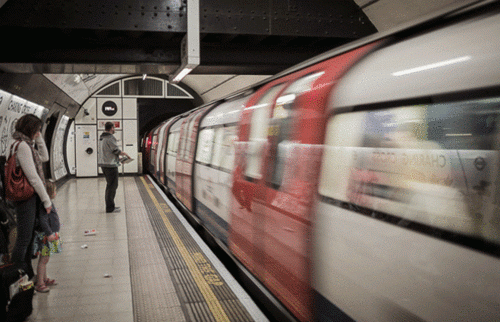 |
| Stare into the image to reverse the train's motion!!! |
♦ time = distance / velocity
♦ [L - vt2] / c = t2 (meeting)
♦ or
♦ [L + vt1] / c = t1 (overtaking)
With meeting or overtaking, the path length or distance, L, will increase or decrease due to the motion or velocity of the object in a certain direction and with a certain magnitude. In the forms as listed above, the motion of the train is going along with or is contrary to the motion of the sound wave. These formulas resemble the MM experimental equations for the reflection of a wave at hard surface:
♦ L / (c + v) = t2 (meeting)
♦ or
♦ L / (c - v) = t1 (overtaking)
As I have shown before the observer on the train uses the following formula to find the train velocity: L = ct2 + vt2 (meeting), or, L = ct1 - vt1 (overtaking). However, the observer at relative rest in the rest area will also use the same formulas. This emerges as a result of the idea that the displacement along the x-axis in a reference frame (whether the reference frame is regarded as in motion or at rest), may be represented by x2 - x1 = L.
In a reference frame moving with constant velocity relative to the resting frame, by the Galilean transformation this displacement is represented by (x2 + vt) - (x1 + vt) = x2 - x1 = L. Thus the formula L = ct2 + vt2 , or L = ct1 - vt1 applies to the motion of the train from the viewpoint of each reference frame. Each reference frame measures the identical time on a clock, and each observer (one at rest, and one in motion) has a means to find the velocity of the train, v, by the same formula (L = ct ± vt), which is not the simplest form of the law or equation of motion (v = [d /t]).

No comments:
Post a Comment